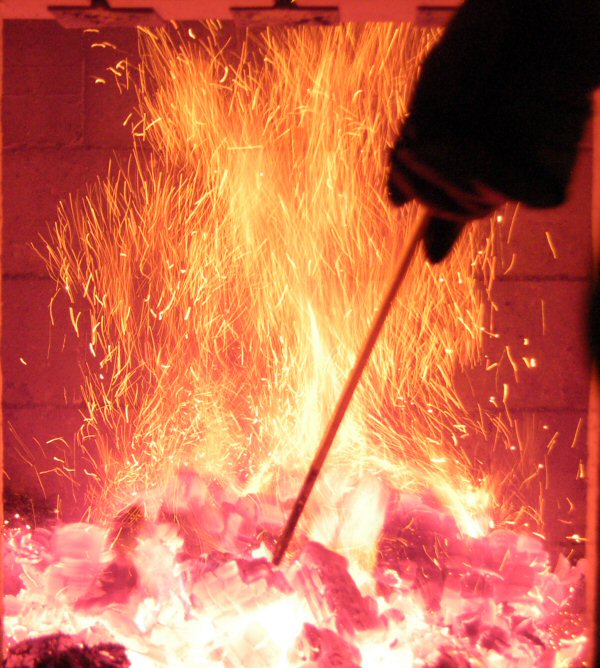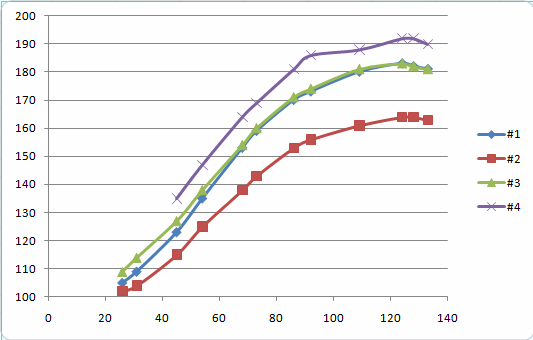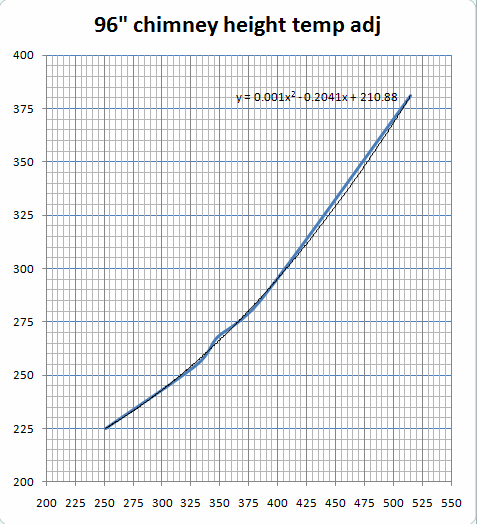


January 19, 2006
This was the original test setup at the Shawville Lopez Lab.
Space considerations dictated an exterior insulated 8" chimney.
This shows the connection via a 3' horizontal run of bare 8x12 clay liner, incorporating a sliding shut-off damper.
The horizontal run was used for opacity measurements.
May 3, 2007
The following year, we modified the exit as shown in order to try some experiments with a
bell section between the heater and the chimney.
There is an air space underneath, to protect the wood floor, and allow measurements.
Two 12"x12"x24" flue liners were modified with pivoting dampers as shown.
Two small "bells" in place. The yellow arrow shows the location of the sliding shut off damper.
The idea was to start with small bells, and get progressively larger, to study the relative effects.
The bells were capped off with ceramic glass.
Water condensation is visible on the underside of the glass, during a burn. The glass eventually got black from soot.
Both flue liners got quite warm along their entire height, due to the buoyancy effect of hotter gases.
The effect on stack temperature was measurable, but was small - roughly 5 degrees F.
January 17, 2009
The flue liner bells were removed.
A firebrick shiner bell section was created by adding height to the connecting piece.
The height was extended by four courses (18") and capped off with ceramic glass.
February 20, 2010
After the results of the July 2009 Rocket-Bell experiments, a diverter was added to the bell.
13.5" high, with a bypass space at the edges.
Four tests were run with the bell in this configuration. HK-L17, HK-L18, HK-L19, HK-L20
March 3, 2010.
With the diverter in place, 5 courses (22.5") in height were added to the bell.
The numbered X's are surface temperature measuring locations. #4 is centered on the right face, close to the top edge.

March 5, 2010.
Test HK-L21
Graph shows the surface temperatures on the bell (F). Bottom scale is time (minutes).
See previous photo for locations.
Note that #2 is cooler than #1 and #3

Summary of 7 tests.
The first test was with no diverter.
The last 2 runs are with the height extension.
The extension seems to add about 1.5% efficiency due to 10 - 15 degrees (F) lower average stack temperature.
The last run had a lower burn rate, due to a cooler firebox, damp wood, smaller load, resulting in higher oxygen, which dropped efficiency.
So, the extension seems more beneficial for a large load than a small load.

This page was updated on
March 7, 2010
This page was created on March 5, 2010